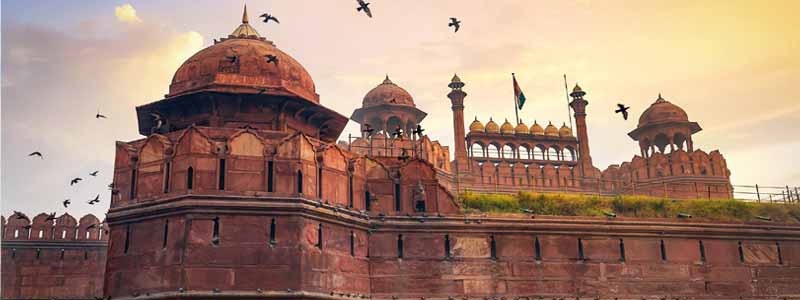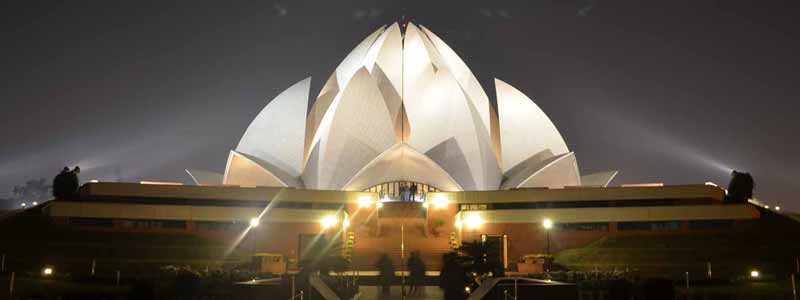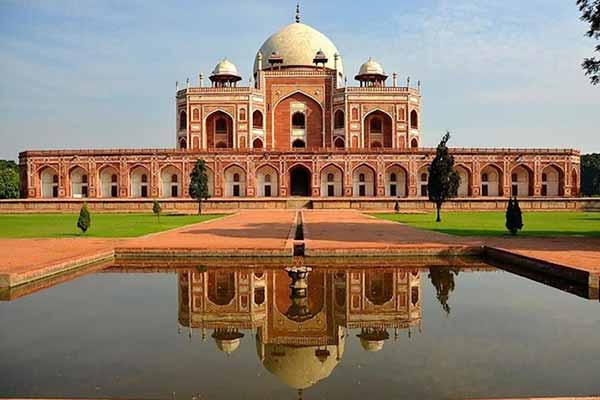Delhi Tour Guide is both a union territory within India, as well as a city, and features two very different worlds: New Delhi and Old Delhi. The former, inaugurated by the British in 1931 to serve as the imperial capital, is the nation’s modern capital and seat of government, while Old Delhi is considered by many as the symbolic heart of the greater metropolitan area.
One of the most populous regions in the world, Delhi is a heady mix of tradition and modernity, important as both a religious center and India’s busiest international gateway. Its history is as old as the ancient Yamuna River, one of the most sacred rivers in Hinduism and a natural dividing line between New Delhi to the west and Old Delhi to the east.
Things to see and do in Delhi and New Delhi are plentiful and include experiencing its diverse arts and crafts industry; its many magnificent monuments; countless performing arts venues; and its excellent cuisine, including delicacies from every corner of India. Delhi Tour Guide is also a shopper’s paradise with numerous bazaars and markets, including Chandni Chowk, the country’s most famous commercial area.
To make the most of your time in this bustling, vibrant city, be sure to review our list of the top tourist attractions in Delhi.

Interesting facts about Delhi
- Delhi is India’s second most populous city with about 20 million people
- It is said to have been built, invaded and rebuilt countless times, as different kingdoms came to power in the North Indian region
- Located here is Asia’s only sacred site for the Baha’i faith, the Lotus Temple
- With 20% green and ecological cover, Delhi Tour Guide is one of the greenest cities in the world
- Delhi is second only to Nairobi in Kenya, as a city rich in avian biodiversity
- Built in 1200 AD, Qutub Minar, the world’s tallest standing brick minaret is found in Delhi
- Most of the modern city of Delhi was designed by British architect, Sir Edwin Lutyens

History of Delhi
Delhi has a long, rich history finding its way in the epic Mahabharata – it is said to be the site of the capital of Pandavas, Indraprastha. During the medieval period, the city was ruled by some of the most powerful Indian emperors the world has ever known like Ashoka and Prithviraj Chauhan. The latter was overthrown by a Muslim invader Muhammad Ghori; post which the Turkish dynasties gained dominance in the area. After his death in 1206, Qutb ud-din Aibak took control and laid the foundation of the Mamluk dynasty and the Delhi Private Day Tours.
Lodis ruled Delhi for almost 300 years after the Mamluks and were succeeded by the Khaljis and the Tughlaqs. By the end of the 14th century, the Sayyid dynasty came to power followed by the Lodis, before the sultanate was destroyed in 1526 by the Mughals. Their rule in Delhi Tour Guide continued for over three centuries, all the while fighting for it with the Marathas.
In the early 19th century, the British East India Company took Delhi under their control and later made it their capital in 1911. The name ‘New Delhi’ was coined in 1927 and post-independence on 15th August 1947, it was officially declared as the capital of India.
List of Best Places to Visit in Delhi:
Delhi Tour Guide You can never get tired of sightseeing in Delhi, where you will easily stumble upon many of its iconic monuments, owing to the sheer number of the historical edifices standing in the city. Just like any metropolitan city in the world, Delhi’s daily hustle-bustle is also a sight to behold. The city’s attractions range from architectural marvels to splendid gardens, historic tombs to places of worship, diverse market-places and dynamic neighbourhoods. Whether you have a few days or weeks to spend, here are the attractions worth fitting into your Delhi Tour itinerary:
Qutub Minar
Qutub Minar is a world-famous structure which is located in Delhi. It is one of the monuments that you should definitely visit and enjoy your time. It is also known as a victory. The first ruler of Delhi’s sultanate started the Qutub Minar and hence it was named after the Delhi sultanate. You can also visit significant monuments in and around the Qutub Minar. There was an earthquake in the 14th century which caused damage to Qutub Minar but later was fixed by Sikandar Lodi.
After that, there was another earthquake in 1803 and it was again renovated by the British Indian army. The planning and financial arrangements for Qutub Minar was done by the Afghani tribe who came to India. It was during the 11th century where different Nomadic clans were united and converted to Islam. The monument is exceptionally constructed and it is one of the beautiful places that you can visit in Delhi Tour Guide so don’t miss out on this special historical monument. Check out the exceptional beauty of the architectures and find out how the rulers have created such beautiful constructions with basic tools.
Humayun’s Tomb
The tomb was named after the Mughal emperor as it was commissioned by his first wife Begum. It is yet another monument addressed under the UNESCO Heritage site which attracts countless tourists from across the globe. The construction was done under the supervision of begam after the Mughal emperor passed away. It took about 7 years to complete Humayun’s Tomb and it was taken care of well.
This is one of the best historical monuments that you should visit without any doubts and the construction was overlooked in the period of Akbar’s reign. It is a great place for every tourist to visit as the ethereal beauty of the tomb is a great place to visit and enjoy. It is one such beautiful place that tourists should never miss out.
There are so many monuments in and around the tomb which you can check out and spend the whole day in here. It is one of the best places and the best time to visit during the month of October as winter climate will help you to enjoy the ambience and the coldest days of the year will be perfect for sightseeing in and around the tomb.
There are so many monuments in and around the tomb which you can check out and spend the whole day in here. It is one of the best places and the best time to visit during the month of October as winter climate will help you to enjoy the ambience and the coldest days of the year will be perfect for sightseeing in and around the tomb.
You can take really good photographs here with perfect lighting and also take a look at the exceptional Persian architect Mirak Mirza works. There are also some restaurants where you can enjoy having lunch or dinner with your family. Collect some souvenirs near the nearby shop to keep it as a remembrance of this place. You can also utilise the guides to check out the famous tourist spots usually visited by the wanderlusts.
Lotus Temple
Lotus temple is one of the main attractions for tourists and especially peace lovers and history class girls. The Lotus temple was constructed using marble clad petals all over the sides and it can hold up to 2,500 people. The Lotus temple has won several accolades and more than 70 million visitors have visited this Lotus temple. Moreover, hundred million visitors have already visited in the year 2014.
This one tourist attraction that you should definitely checkout. Previously the place was called the house of worship for all kinds of religion and faith. Persian architect from Canada designed this construction with the inspiration of lotus. The most visited tourist attraction in the country has 10,000 daily visitors. The Bahai religion has no idols or pictures to worship and there are around seven houses of worship situated in different countries such as Sydney, Frankfurt, Germany, Willmott, USA and more.
You will definitely enjoy this place and feel peaceful from inside. This unique place has a charming Garden and infuses an aura of positive Vibes. People from diverse religions visit this beautiful place as Lotus is a common symbol of many religions. When you are visiting this place, you can enjoy other places as well as there are several tourist attractions located near this incredible building.
Akshardham Temple
Swaminarayan Akshardham temple is located in New Delhi very close to Noida. The temple was opened 15 years ago in front of Doctor APJ Abdul Kalam, KL Advani and Manmohan Singh. The temple is one of the best tourist destinations that everyone loves to visit once. This exceptional architecture inculcates a perfect clean atmosphere. Most of the tourists who have visited New Delhi will definitely check out this place as it is a must-see tourist destination.
One can stay up to 3 hours there to explore the beautiful temple. Moreover, it is essential to know that the temple took around 5 years to be completed. The temple is dedicated to Bhagwan Swami Narayan and it holds the value of ancient culture in the country. You will also get to view the sculptures of Indian heroes, factory arts and warriors in bronze. The old temple is marvelous and you can also get to view the life teachings of Bhagwan Swami Narayan. The entry fee is not more than 200 and it varies for children and adults. The nearest metro station is Akshardham and you can easily reach the temple.
Red Fort
It is time to relish the historic fort in the Delhi region which served as the exceptional residence for Mughal emperors. Famous emperor Shah Jahan constructed the Red fort when he moved the capital from Agra to Delhi. The Red Fort was constructed by the architect Ustad Ahmed Lahori who built the Taj Mahal. The fort is very near to the Yamuna river and the construction was initiated in the first month of the Islamic calendar and it was under the supervision of Shahjahan himself.
After Shahjahan, his successor Aurangzeb constructed the pearl mosque. Several rulers defeated the Mughal army and plundered the Red Fort to acquire the peacock throne. The history of the Red Fort is vast and it is one of the major historical forts that you should definitely visit without any doubts. Moreover, the Red Fort is represented as the senate of mohal creativity which had an influence on buildings constructed later in and around the Indian subcontinent.
When you visit the Red Fort, you should definitely take a look at the structures such as Lahori gate, Delhi chhata chowk, naubat khana, Mumtaz Mahal, rang Mahal, Khaas Mahal Hira Mahal and more. You can definitely spend at least half a day in the red fort to explore these historical monuments and have a great time.
India Gate
India gate which was formerly called as the all India war memorial is in New Delhi and it is also called Kingsway. Edwin Lutyens constructed the memorial gate which stands as a memorial for more than 70000 soldiers of the British Indian army who died in the first world war. It is one of the iconic places that needs no introduction as it is a popular tourist place to visit.
The design is compared to the Arc de Triomphe in Paris, in Paris and for Arch of Constantine, the India gate is one of the main tourist attractions that is open from 7 p.m. to 9 p.m. The republic day parade also passes through this spot and many process protests have taken place in this popular spot. The design and structure is exceptional and is rare to look at. Over there, you will find the words inscribed in the India gate
Jantar Mantar
Jantar Mantar is located in New Delhi, it was built in 1724 by Maharaja Jai Singh II of Jaipur to revise the calendar and astronomical tables. The altitude of the observatory is 723 feet (220 m) and its primary purpose was to compile astronomical tables and to predict the time and movement of the Sun, Moon, and planets. It consists of 13 architectural Astronomy Instruments including Ram Yantra, Samrat Yantra, Jai Prakash Yantra, and Mishra Yantra which are the specific attractions of Jantar Mantar.
Shopping In Delhi:
Massive extravagant glass malls or colourful heritage open-air markets, Delhi has a range of shopping experiences to offer where you can buy everything — from big brands to handicrafts to fresh organic produce. Here’s a pick of top shopping places you must visit at least once, during your stay in the city:
- Chandni Chowk – The historic marketplace that has specialised bazaars for products ranging from electronics to silver jewellery to spices. It is also a renowned destination to sample Delhi’s delicious street food.
- Sarojini Nagar – Head to this famous shopping district in South Delhi for its countless clothing stalls and stores that sell branded attires at pocket-friendly prices.
- Khan Market – Not the largest market in Delhi, but known for its branded outlets, boutiques and bookstores. There are also good restaurants and cafés here.
- Janpath & Tibetan Market – Souvenirs, hand-crafted textiles, jewellery, instruments, flags, bags and anything else you can imagine, can all be found at this vibrant market — at bargained prices!
- Sundar Nagar – Discover wondrous objects at this artsy market such as exquisite antiques, precious jewellery, unique home décor and hand-spun textiles. Take a break at one of the market’s upscale tea houses.
Best time to visit In Delhi:
Delhi gets extreme summers and really cold winters, separated by an unpredictable monsoon and pleasant transitional days across the year. No matter the season, the city is always welcoming tourists so you can plan a trip as per dates convenient to you. However, if weather is a consideration, early and late winters are the best time to visit Delhi — around November and February. Being out and about is most comfortable in these months, so you can maximise your days.
How to get to Delhi:
How to reach Delhi is the first and foremost thing that comes to mind while planning a trip to this historic city. Serving as the capital city of the nation, Delhi has best transport facilities and reaching here is no fuss. The city is well-connected to major parts of the country by air, rail and road. Indira Gandhi International Airport (IGI) is the main aerodrome serving national and international travellers a large.
By Air:
Delhi boasts the best domestic and international air connectivity of the country, with flights from all major cities and most towns landing at the award-winning Indira Gandhi International Airport. Minutes within landing, you can book yourself a taxi to enter the city via the Delhi-Gurgaon Expressway or catch one of the lines from the Airport Metro Station.
By Road:
Delhi has a dense road network, including five national highways such as NH1, NH2, NH8, NH10 & NH24. From any direction or neighbouring state, you can easily and comfortably drive yourself, hire an outstation taxi or take a bus to one of the three bus terminals in the city.
By Train:
The Old Delhi Railway Station, New Delhi Railway Station and Hazrat Nizamuddin Railway Station make up the main junctions for trains arriving into Delhi from various parts of the country. There are countless options for trains to the all-important region around the capital that run daily and weekly.
